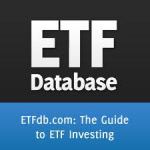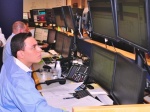 Courtesy of John Spence, ETF Trends
Courtesy of John Spence, ETF Trends
The percentage of ETF trading relative to overall volume tends to shoot higher in headline-driven markets when asset classes are moving together on macroeconomic or political events.
That’s exactly what happened on Monday when global markets swooned on fears parliamentary elections in Italy will result in political gridlock. After months of simmering on the back burner, Europe’s debt crisis roared back into the news. [Italy ETF Swings Lower on Berlusconi, Election]
On Monday, ETFs accounted for 32% of overall dollar volume, and there have been multiple sessions in the past week when the share rose above 30%, says Chris Hempstead, director of ETF execution services at WallachBeth Capital.

“It’s rare when ETF volume goes above 30%,” he said in a telephone interview Tuesday morning.
Hempstead said he has seen the figure approach 40% on some days during the past few years.
“ETF trading spikes when people think events are highly correlated and macro in nature,” he noted. “When stock pickers are having a tough time and market correlations rise, that’s when we see the ETF percentage of overall volume start to creep up.”
For example, trading volume in volatility-linked ETFs soared in Monday’s risk-off attack as investors looked for shelter and hedges. The CBOE Volatility Index has jumped 54% in a week. [Volatility ETF Trading Surges on Market Jitters, VIX]
“When the percentage of ETF trading in markets pops, a lot of it is people putting on trades to hedge bets. It’s not buy-and-hold,” Hempstead said. Continue reading








